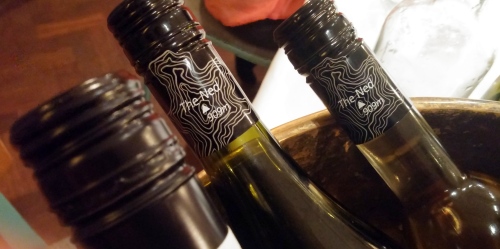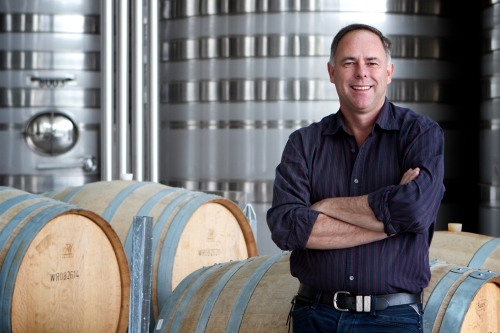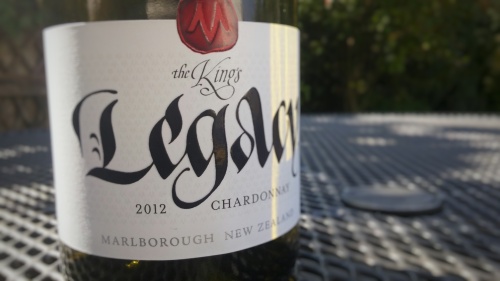Sometimes the world of wine might seem a bit static. Think of it like the solar system, with any number of interesting bits flying around at any given time, but all of it in a vague kind of orbit, tethered to a handful of eminently familiar names and regions, which are not to be shifted. Bordeaux, Burgundy, Champagne, Rhone, Rioja, Tuscany, Piedmont, perhaps the Mosel, Napa and Barossa valleys at the extremely distant reaches, constitute the planets, surrounded by moons and comets and satellites and assorted debris that people only ever consider fleetingly.
But then, every now and then something pops up that illustrates quite how rapidly the scene can shift. And Brent Marris is a scene-shifter, a shooting star, man who in less than 10 years turned a neglected patch of earth into a global phenomenon.
Marris built up the Wither Hills winery with his father, John, before selling it to Antipodean booze giants Lion, the people behind Lindauer, Petaluma, Knappstein and the local distribution of all sorts of famous international beers, for about £23m. That wasn’t the end, though, but the beginning. Marris trousered his share of the cash, and then he went shopping.
It wasn’t until 2004 that he planted the first vines on his new 268-hectare property by the Waihopai River in New Zealand’s south island (there are two Waihopai rivers in New Zealand, inexplicably, and this, despite being pretty southern, is the more northerly). By 2012 he was filling 400,000 cases a year with 4.8m bottles. Picture, if you will, the Aquatics Centre at the 2012 London Olympics: that’s enough to fill its Olympic swimming pool with wine, with enough left over to give each of the 17,500 spectators 85 bottles to take home. That year Majestic, one measly chain of shops on one small island on the other side of the world, sold a million bottles of The Ned sauvignon blanc on their own, while the stuff was also flooding out the doors of one of the nation’s bigger supermarket chains, Waitrose.
And still it was growing, and continues to grow. By now there are 600 hectares of vines – about the size of 840 football pitches, if you’ll allow me yet another sporting-vinous size analogy – with another 400 waiting to be planted. A troublesome 2015 vintage (in quantitative terms – there’s 30% less of it than there was of the 2014) will hold back expansion but even so Australia, the US, the UK, Canada, Germany, China and Scandinavia will be inundated with tastefully black-labelled bottles. Marris boasts that, across his whole range of wines – which includes the various Neds, the Kings Series and the Craft Series, as well as a couple of smaller bottlings, such as the Three Terraces sauvignon blanc he makes for the Wine Society – “every 24 hours, 15,000 bottles are consumed somewhere in the world”. If you do the maths, that means that on average someone somewhere uncorks (or unscrews, more commonly) a bottle of his wine every 5.7 seconds.
You can’t drink numbers, but even so they’re pretty intoxicating. And I still haven’t mentioned the most remarkable thing of all: the 2015 Ned sauvignon blanc, the biggest of all his big successes, is really good.
It hasn’t been bottled yet, but when I met Brent he assured me that the samples he had brought to the UK to show people in the trade were fairly representative. “I’d have loved more, because I can sell it, but I haven’t been as excited about a vintage for a long time,” he said. And it’s easy to see why: in 2015 the Ned produced an excellent pinot grigio (the biggest-selling pinot grigio in New Zealand, where it outsells the sauvignon blanc “in some months”, though it’s labelled pinot gris there – as it would be here if only Majestic let him), a fine pinot rose (equal parts pinot gris and pinot noir), and an exemplary sauvignon blanc: acidic, taut, electric and icy.
Marris credits his new winery, build five years ago, with his subsequent successes. “It’s like a boutique winery, but on a commercial scale,” he says. “From a winemaking perspective, we’re doing everything we can to be gentle. Is The Ned commercial? You bet it is, but it’s also sourced from a single vineyard, and hand sold.”
Of the rest of his range, outside his white 2015s – for which you’ll have to wait until the autumn – I particularly enjoyed two Kings Series wines: the King’s Favour sauvignon blanc 2013, which he said is “targeted towards top independents – a special occasion wine” but for all that is currently reduced from £14.99 to £9.99 at Majestic, and the King’s Legacy chardonnay 2012, faintly reductive (a love-it-or-loathe-it burnt-match character that I really like in dry whites), creamy and leesy without obtrusive oak (it’s aged in large, 500 litre oak barrels). In most of the world it’s called the King’s Bastard, but Britain and Canada are too prim for that kind of language, hence the more sedate title. This too is currently a penny under a tenner at Majestic, and they’re both very good value at that price.
My eldest child is nearly eight years old, and sometimes I look at her and marvel at how this little thing I created (helped to create) has grown. I can only wonder what Marris must feel as he surveys his empire. For the crime of making me feel like a hopeless underachiever I consider him a total, erm, legacy. In all other respects, I doff my cap. The Ned isn’t always great, but it’s probably the best of the mass-market Kiwi savvies, and that anything made in such quantities can even occasionally tiptoe in that direction is something of a miracle. So if you see anything with this year on the label, buy it and try it while you’ve got the chance. After all, there isn’t much of it about*.
*Relatively speaking.






